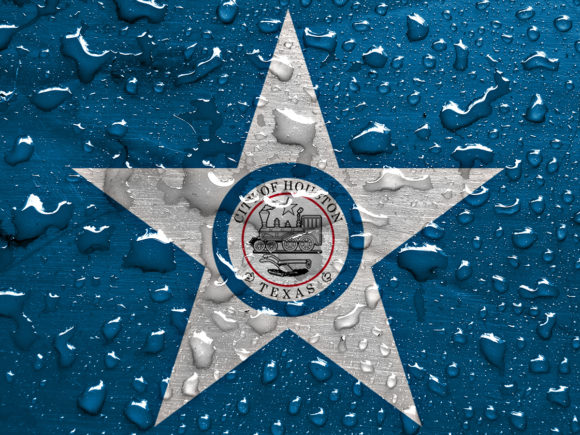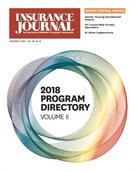Studies published earlier this year by the National Oceanic and Atmospheric Administration and the National Hurricane Center showing a dramatic increase in the frequency of intense rain events in the Houston area in recent years take on even more meaning in light of recent research from the University of Iowa and Princeton University finding that Houston’s sprawling footprint, the overabundance of impervious surfaces such as concrete, and even its skyscrapers served not only to exacerbate the devastating and widespread flooding during Hurricane Harvey last year, but those factors also increased the amount of rainfall that occurred during the storm.
The National Hurricane Center issued a report in January showing that the flooding experienced in the Houston metro area last year as a result of Hurricane Harvey was greater than a once-in-1,000-year event, the highest level it calculates.
A more recent report, issued in late September by NOAA re-defines what a 100-year rainfall event means in Texas, finding for instance that what previously would have been considered a 100-year-rain event in the Houston area could now be classified as a more frequent, 25-year event. The study, published as “NOAA Atlas 14, Volume 11 Precipitation-Frequency Atlas of the United States, Texas,” upped the agency’s rainfall estimate for 100-year events in the Houston area from 13 inches to 18 inches in a 24-hour period. The new values supersede those that were previously available and were based on data from the 1960s and ’70s.
Harvey produced 40 – 60 inches of rain in the Houston area over the span of four days. According to Princeton and University of Iowa researchers, the city’s widespread urbanization may be partly to blame for the increase not only in the massive flooding that occurred but for the increased precipitation, as well.
“Houston’s urban landscape directly contributed to the torrential rainfall and deadly flooding experienced during Hurricane Harvey in August 2017, according to Princeton and University of Iowa researchers,” wrote Lynn Anderson Davy, University of Iowa, and Morgan Kelly, Princeton Environmental Institute, in summarizing a report published in the journal Nature on Nov. 15.
According to the report, “Urbanization exacerbated the rainfall and flooding caused by hurricane Harvey in Houston,” by Wei Zhang, Gabriele Villarini, Gabriel A. Vecchi and James A. Smith, because of urbanization, Harvey-related flooding in Houston was 21 times greater than it might otherwise have been had the storm been concentrated over a non-urban area.
“Overall, we find that the probability of such extreme flood events across the studied basins increased on average by about 21 times in the period 25-30 August 2017 because of urbanization,” the researchers state in a synopsis of the report.
The study’s authors also say global climate models should take into account the “effect of urbanization on storm-induced extreme precipitation and flooding.”
Overall, Harvey caused an estimated $125 billion in damage and killed 68 people. As of July 31, 2018, the National Flood Insurance Program had recorded Harvey-related 75,865 flood insurance claims, and paid out $8,757,093,726 in losses on claims that averaged $115,430 per claim. Those figures represent not just the Houston area but losses in all affected states that received presidential disaster declarations as a result of the hurricane.
Using different computer models, the researchers looked at simulations of Harvey’s rainfall located in Houston’s current urban profile and also in areas with the same geographic location but with “open fields and crops in place of streets and skyscrapers,” Lynn Anderson Davy wrote in an article for the University of Iowa’s Hydroscience and Engineering research center. In the simulations, the urban areas received significantly more rainfall and different rainfall patterns than that experienced in the rural areas.
Houston’s skyscrapers also helped make the rainfall worse, the researchers found, by creating a “drag effect” that caused Harvey’s winds to shift upwards. When the warmer surface air met the cooler air in higher atmospheric levels, it created an “optimal situation for cloud formation and precipitation,” Davy wrote.
The skyscrapers also caused the storm to slow down, causing more rain to fall in concentrated areas, the researchers said.
Was this article valuable?
Here are more articles you may enjoy.



 Litigation Funding, Other New Laws in SE States Could Impact Liability Insurance
Litigation Funding, Other New Laws in SE States Could Impact Liability Insurance  FBI Involved After Two Florida Injury Lawyers Go Missing From Fishing Trip
FBI Involved After Two Florida Injury Lawyers Go Missing From Fishing Trip  Berkshire Hathaway Raises New CEO Abel’s Salary to $25 Million
Berkshire Hathaway Raises New CEO Abel’s Salary to $25 Million  Howden US Tells Judge Brown & Brown Employees Fled Due to ‘Mistreatment’
Howden US Tells Judge Brown & Brown Employees Fled Due to ‘Mistreatment’ 


